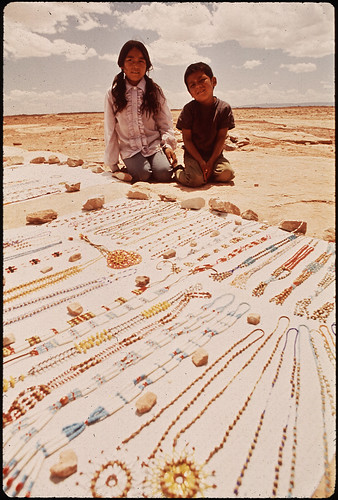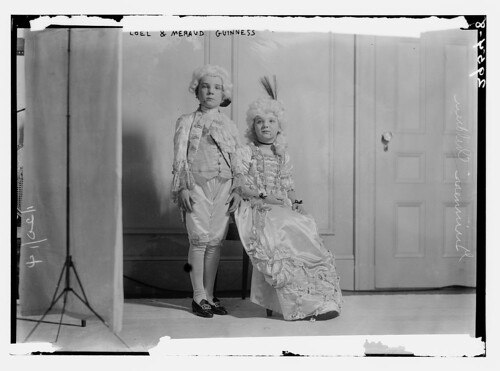One of the main things that stood out to me during my reading of this book was the fact that many of these strategies geared towards English Language Learners would also benefit native speakers in their own emerging literacy and language skills. For example, reading and re-reading the same read-alouds is useful for native English speaking classes as well as ELLs. As Buhrow and Upczak Garcia state, "this repetition once again gives ELLs access to their new language and text through pictures and modeling of conventional English. It allows them to develop their listening and speaking skills with texts that become more familiar with each read. With kids who have more experience, reading and rereading allows a deeper look at the story" (Buhrow and Upczak Garcia, 2006, L. 1214). I feel that in this quote, you can replace the word ELL with Emergent Readers and the meaning and value remain the same.
Many things squared with my thinking and experiences, having been fortunate enough to work in loosely structured environments like the one described in the book and having seen some of the techniques in action. In our classroom, we have some of the same features described in the book, such as comfortable beanbags for kids to read and write on, and plenty of clipboards to use as "moving" desks. If we had more space, I'd love to have more comfy armchairs and low tables, and really internalize the notion of "feng shui, the art of designing space that maximizes the flow of energy so that it doesn't become trapped or stagnant, to create a low-stress, comfortable environment where learning and thinking is not only conducive but comes naturally to the children" (Buhrow and Upczak Garcia, 2006, L. 339). The authors also make cogent points about adult readers and writers preferring comfortable environments with ambiance to do their work. It makes perfect sense to let kids experience this as well, and lets them model what adult readers and writers do.
Modeling is a big part of what squared with my thinking in this book. While I have not implemented many of the strategies mentioned, my understanding of the value of modeling has been growing since I began this program. I can so relate to the authors when they say "too often kids think 'success' means pleasing the teacher, so they try to copy us" (Buhrow and Upczak Garcia, 2006, L.555). Just today, I asked a student who had gotten in conflict what he thought he should do to resolve the situation. He said "apologize?" With this chapter fresh in my mind, I asked him if he wanted to apologize because that's what he wants to do or because that's what he thinks
I want him to do. He answered the latter. It just goes to show me how careful I need to be as a teacher in guiding students to make their own decisions and not base everything off of what they think the adult in the room wants. This all goes in to taking ownership of one's own learning and even one's own life.
I am being pointed in new and delightful directions by many of the practices in this seemingly utopian classroom. I love love LOVE the idea of letting kids go free with chart paper. Where did I get this idea that big chart paper is just for teachers to control the use of? What better way to show them that their work is important and valuable than to let them publish it in big bold writing on a beautiful large sheet of paper? Also, the idea of raising thumbs rather than hands. It sound much more pleasant and models more closely how adult conversations should go. I really like how the teachers "label the work with placards that say things such as 'Works in progress,' or 'Thinking in progress,' or even 'Thinking is happening here,' which allows other children, teachers, and parents to watch the entire thought process from start to finish" (Buhrow and Upczak Garcia, 2006, L. 369). I had never before considered the value of the thought process the way Buhrow and Upczak Garcia do, and indeed they use many unconditional methods such as having kids write in pen rather than pencil so that the records of their evolving writing skills are not erased in the editing process. I also think this celebration of the process rather than the finished product must lift some of the pressures of perfection some kids feel. I know in my classroom, I have students who hate the editing process because to them it means their work is "wrong" or that they weren't smart enough to get it perfect the first time. As a teacher (and a longtime student) of writing, it breaks my heart to see these limiting, rigid attitudes towards their own worth as writers based on a first draft effort. By displaying works in all phases of the publishing process and celebrating the merits of all the stages, I can imagine a shift in attitude ocurring that would teach children those values I so want them to absorb. I also think that my goals in having a less teacher-centered classroom culture would be aided by these displays of works-in-progress because as the authors say, "when kids are able to see other writers' thinking, writing, editing, and rewriting, they notice and learn from each other through the writing process" (Buhrow and Upczak Garcia, 2006, L.382). Of course once again, being able to display work and leave work out to this degree requires the privilege of space, something that is hard to come by in our little classroom.
I am drooling over the beautiful organization and user-friendliness of the class library described, where they practice "putting the books in small tubs based on a theme, then labeling the tub with a sentence, underlining the important word or words, and including a picture" because it "increases a child's access to different kinds of books based on interest and reading development. Of course it would naturally follow that "kids spend less time searching for books that interest them and more time reading" (Buhrow and Upczak Garcia, 2006, L.445). This is the way my class library is organized in my dreams, however at the moment, we are very limited by space. I wonder how Buhrow and Upczak Garcia would tackle organizing my library in my given space? Or even my whole classroom?
Still circling in my mind are a few of the moments in the book I took issue with, at least for my personal teaching situation. in Location 728, Buhrow and Upczak Garcia talk about using eye contact rather than calling names during large group discussions. Instantly, I thought of some of students on the spectrum of Autism, for whom eye contact is often uncomfortable and unnatural, and is something a teacher must ask for or remind him or her of. Those students may be uneasy maintaining eye contact with the speakers, and their lack of eye contact does not equate with lack of attention in many cases. While eye contact is a social norm and expectation in our culture and should be something teachers continue working with reticent students on, I don't think it would work in every classroom in the place of identifiable social gestures such as hand-raising. There is something too subtle and socially dependent about the eye-contact method that could confuse and muddle the whole model of exchanging ideas and conversation we are trying to convey. Some kids need more concrete representations to scaffold them through social situations that require taking turns when speaking, etc.
All in all, the possibilities explored in
Ladybugs, Tornadoes, and Swirling Galaxies so far leave me feeling thirsty and eager. I want to become a leader in my own classroom and put some of these ideas to the test, and see for myself the kinds of changes it creates in the lives of students and teachers, all learners in their own right.




